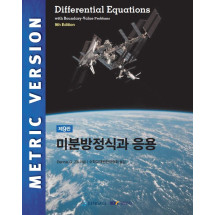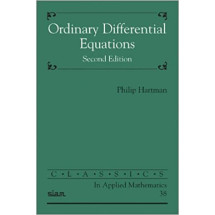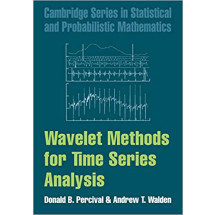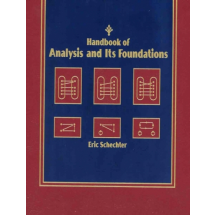List of Figures xi
List of Tables xiii
Preface xv
PART I: INTRODUCTION 1
1. Qualitative Overview 3
1.1 The Necessity of Ecological Inferences 7
1.2 The Problem 12
1.3 The Solution 17
1.4 The Evidence 22
1.5 The Method 26
2. Formal Statement of the Problem 28
PART II: CATALOG OF PROBLEMS TO FIX 35
3. Aggregation Problems 37
3.1 Goodman's Regression: A Definition 37
3.2 The Indeterminacy Problem 39
3.3 The Grouping Problem 46
3.4 Equivalence of the Grouping and Indeterminacy Problems 53
3.5 A Concluding Definition 54
4. Non-Aggregation Problems 56
4.1 Goodman Regression Model Problems 56
4.2 Applying Goodman's Regression in 2 x 3 Tables 68
4.3 Double Regression Problems 71
4.4 Concluding Remarks 73
PART III: THE PROPOSED SOLUTION 75
5. The Data: Generalizing the Method of Bounds 77
5.1 Homogeneous Precincts: No Uncertainty 78
5.2 Heterogeneous Precincts: Upper and Lower Bounds 79
5.2.1 Precinct-Level Quantities of Interest 79
5.2.2 District-Level Quantities of Interest 83
5.3 An Easy Visual Method for Computing Bounds 85
6. The Model 91
6.1 The Basic Model 92
6.2 Model Interpretation 94
6.2.1 Observable Implications of Model Parameters 96
6.2.2 Parameterizing the Truncated Bivariate Normal 102
6.2.3 Computing 2p Parameters from Only p Observations 106
6.2.4 Connections to the Statistics of Medical and Seismic Imaging 112
6.2.5 Would a Model of Individual-Level Choices Help? 119
7. Preliminary Estimation 123
7.1 A Visual Introduction 124
7.2 The Likelihood Function 132
7.3 Parameterizations 135
7.4 Optional Priors 138
7.5 Summarizing Information about Estimated Parameters 139
8. Calculating Quantities of Interest 141
8.1 Simulation Is Easier than Analytical Derivation 141
8.1.1 Definitions and Examples 142
8.1.2 Simulation for Ecological Inference 144
8.2 Precinct-Level Quantities 145
8.3 District-Level Quantities 149
8.4 Quantities of Interest from Larger Tables 151
8.4.1 A Multiple Imputation Approach 151
8.4.2 An Approach Related to Double Regression 153
8.5 Other Quantities of Interest 156
9. Model Extensions 158
9.1 What Can Go Wrong? 158
9.1.1 Aggregation Bias 159
9.1.2 Incorrect Distributional Assumptions 161
9.1.3 Spatial Dependence 164
9.2 Avoiding Aggregation Bias 168
9.2.1 Using External Information 169
9.2.2 Unconditional Estimation: Xi as a Covariate 174
9.2.3 Tradeoffs and Priors for the Extended Model 179
9.2.4 Ex Post Diagnostics 183
9.3 Avoiding Distributional Problems 184
9.3.1 Parametric Approaches 185
9.3.2 A Nonparametric Approach 191
PART IV: VERIFICATION 197
10. A Typical Application Described in Detail: Voter Registration by Race 199
10.1 The Data 199
10.2 Likelihood Estimation 200
10.3 Computing Quantities of Interest 207
10.3.1 Aggregate 207
10.3.2 County Level 209
10.3.3 Other Quantities of Interest 215
11. Robustness to Aggregation Bias: Poverty Status by Sex 217
11.1 Data and Notation 217
11.2 Verifying the Existence of Aggregation Bias 218
11.3 Fitting the Data 220
11.4 Empirical Results 222
12. Estimation without Information: Black Registration in Kentucky 226
12.1 The Data 226
12.2 Data Problems 227
12.3 Fitting the Data 228
12.4 Empirical Results 232 13. Classic Ecological Inferences 235
13.1 Voter Transitions 235
13.1.1 Data 235
13.1.2 Estimates 238
13.2 Black Literacy in 1910 241 PART V: GENERALIZATIONS AND CONCLUDING SUGGESTIONS 247
14. Non-Ecological Aggregation Problems 249
14.1 The Geographer's Modifiable Areal Unit Problem 249
14.1.1 The Problem with the Problem 250
14.1.2 Ecological Inference as a Solution to the Modifiable Areal Unit Problem 252
14.2 The Statistical Problem of Combining Survey and Aggregate Data 255
14.3 The Econometric Problem of Aggregating Continuous Variables 258
14.4 Concluding Remarks on Related Aggregation Research 262
15. Ecological Inference in Larger Tables 263
15.1 An Intuitive Approach 264
15.2 Notation for a General Approach 267
15.3 Generalized Bounds 269
15.4 The Statistical Model 271
15.5 Distributional Implications 273
15.6 Calculating the Quantities of Interest 276
15.7 Concluding Suggestions 276
16. A Concluding Checklist 277
PART VI: APPENDICES 293
A. Proof That All Discrepancies Are Equivalent 295
B Parameter Bounds 301
B.1 Homogeneous Precincts 301
B.2 Heterogeneous Precincts 302
B.3 Heterogeneous Precincts 303
C Conditional Posterior Distribution 304
C.1 Using Bayes Theorem 305
C.2 Using Properties of Normal Distributions 306
D The Likelihood Function 307
E The Details of Nonparametric Estimation 309
F Computational Issues 311
Glossary of Symbols 313
References 317
Index 337














